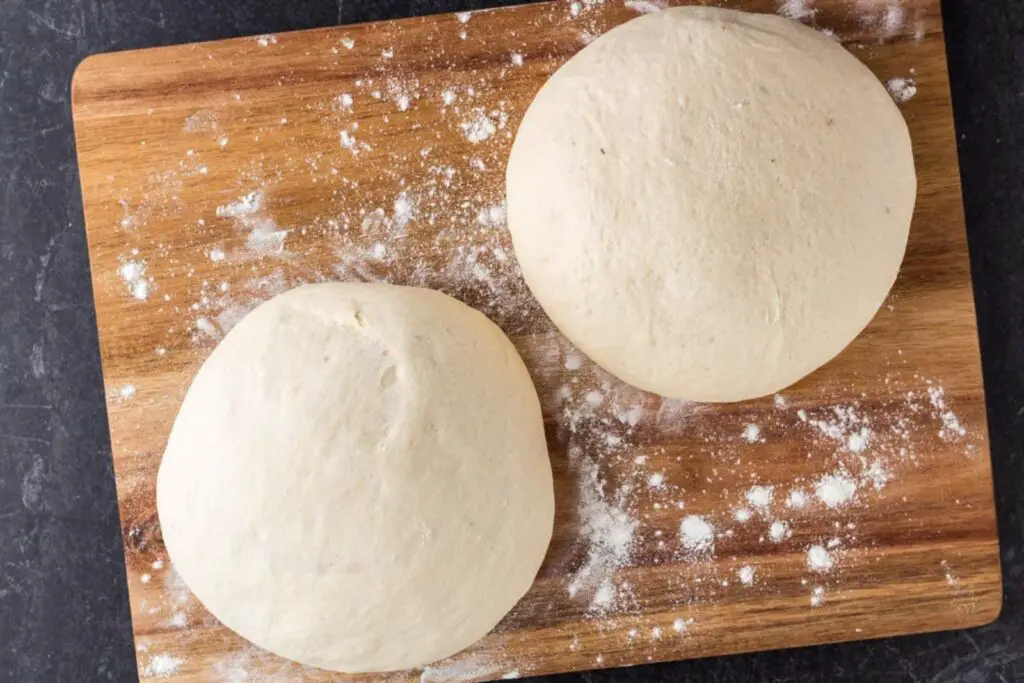
Soup is a comforting and versatile dish enjoyed by many people around the world. Whether it’s a hearty vegetable soup, a creamy chowder, or a savory broth-based soup, freezing it can be a convenient way to have a quick and delicious meal ready whenever you need it. Freezing soup allows you to prepare larger batches and preserve the flavors and nutrients for later consumption. This article will guide you through the process of freezing soup properly, ensuring that it maintains its taste and quality when you’re ready to enjoy it.
If you’re looking to freeze your favorite soups, follow these steps:
Step 1: Prepare the soup
When it comes to freezing soup, the initial step revolves around preparing the soup itself. This can involve either cooking up a fresh pot of soup or utilizing any leftover soup that you have on hand. Regardless of which route you take, ensuring that the soup is prepared to your desired flavor and consistency is crucial.
If you’re starting from scratch, gather all the necessary ingredients for your chosen soup recipe. Whether it’s a hearty minestrone, a creamy tomato bisque, or a soothing chicken noodle soup, having the right ingredients in place is the foundation for a successful freezing process.
Begin by chopping vegetables, dicing meats, and measuring out seasonings according to your recipe. Sauté onions, garlic, or any other aromatics to infuse rich flavors into the soup base. Depending on the type of soup you’re making, you might also need to boil, simmer, or blend the ingredients together to achieve the desired texture and taste.
For those working with leftover soup, ensure that the soup is still within its safe consumption window. Leftover soup should be promptly refrigerated after cooking and consumed within a few days to maintain its quality. If you’re not able to consume it within that time frame, freezing becomes an excellent option to preserve both taste and nutrients.
As you prepare the soup, consider how it will hold up during the freezing and thawing process. Some soups, like those with delicate dairy components, might experience slight textural changes after thawing. However, many soups, especially those with robust broth bases or vegetable-heavy compositions, tend to freeze and reheat exceptionally well.
Step 2: Cool down the soup
In the journey to freeze your soup effectively, a crucial step is the proper cooling down of the prepared soup. Ensuring the soup reaches an appropriate temperature before freezing not only maintains its quality but also prevents the formation of harmful bacteria during the freezing process.
After you’ve prepared the soup to your satisfaction, it’s imperative to allow it to cool down before proceeding with freezing. Rapidly cooling the soup prevents it from spending an extended period in the “danger zone” – the temperature range between 40°F (4.4°C) and 140°F (60°C) in which bacteria can multiply rapidly, potentially leading to foodborne illnesses.
To cool down the soup, start by letting it sit at room temperature for a short period, typically around 30 minutes to an hour. During this time, the soup’s temperature will begin to drop naturally. Stirring the soup occasionally can help distribute the heat evenly, aiding in the cooling process.
If you’re looking to speed up the cooling process, consider utilizing an ice bath. This method involves placing the pot of hot soup into a larger container filled with ice water. Make sure the pot is securely positioned and that no water can seep into the soup. Stirring the soup gently within the ice bath helps distribute the heat more evenly and cools the soup down faster.
Step 3: Choose freezer-safe containers
When it comes to freezing your prepared soup, the right choice of containers plays a significant role in preserving its taste and texture. Opting for suitable freezer-safe containers is essential to prevent freezer burn, maintain flavor, and ensure convenient storage.
Freezer-safe containers are specifically designed to withstand the low temperatures of the freezer without becoming brittle or cracking. These containers are made from materials that are less prone to temperature-related damage, ensuring your soup remains in optimal condition until you’re ready to enjoy it.
Here are some container options that are commonly used for freezing soup:
- Plastic Containers: Sturdy and versatile, plastic containers are a popular choice for freezing soup. Look for containers labeled as “freezer-safe” or “microwave-safe” to ensure they can withstand freezing and reheating. Make sure the lids fit tightly to prevent air exposure that can lead to freezer burn.
- Glass Jars: Glass jars, such as mason jars, are another excellent option. They are transparent, which allows you to see the contents easily, and they are resistant to absorbing odors and flavors. Leave some headspace at the top of the jar to allow for expansion during freezing.
- Resealable Freezer Bags: Freezer bags are a space-efficient choice, especially for soups with higher liquid content. They can be flattened for easy storage and can fit into tight spaces in the freezer. Double-bagging or using bags with a thicker material can provide extra protection against freezer burn.
Before filling any container with your soup, ensure they are clean and dry. Any moisture on the container’s surface can lead to ice crystals forming, affecting the soup’s quality. You can wash the containers with warm, soapy water and rinse thoroughly before use. If using glass jars, make sure they are tempered to withstand extreme temperature changes.
When selecting the container size, consider portioning the soup according to your needs. Smaller portions are easier to defrost and reheat, reducing waste.
Step 4: Portion the soup
As you embark on the process of freezing soup, an important consideration is how you portion the soup before freezing it. Proper portioning not only facilitates convenient reheating but also minimizes food waste and ensures that you can enjoy your frozen soup without thawing more than necessary.
Dividing your prepared soup into individual or family-sized portions offers several advantages:
- Efficient Defrosting: Portioning your soup into smaller containers allows for quicker and more even defrosting. Smaller portions thaw faster than a large block of frozen soup, enabling you to have a hot and ready meal in less time.
- Reduced Waste: Freezing an entire batch of soup as a single unit might lead to wastage. If you only need a portion of the soup, you’d have to thaw the entire batch, which could result in leftover soup that might go to waste. Portioning ensures you can thaw and reheat only the amount you intend to consume, minimizing unnecessary disposal.
- Flexible Meals: Individual portions offer flexibility in meal planning. Whether you’re dining alone or with family, you can easily grab the right amount of soup you need without defrosting more than necessary.
- Convenient Storage: Smaller portions take up less space in the freezer, making it easier to organize and maximize freezer storage capacity. They can also be stacked efficiently, optimizing the use of available space.
To effectively portion your soup, consider the typical serving size and your specific consumption needs. For individual portions, aim for an amount that constitutes a full meal. For family-sized portions, think about how much soup your family usually consumes in one sitting.
Step 5: Fill the containers
As you progress through the process of freezing your soup, the way you fill the chosen containers plays a crucial role in maintaining the soup’s quality and ensuring proper freezing. Thoughtful and precise filling not only prevents potential container breakage but also safeguards against texture alterations and flavor loss.
Once you have chosen the appropriate freezer-safe containers, which we discussed in earlier steps, it’s time to transfer your prepared soup into them:
- Ladle the Cooled Soup: Begin by using a ladle to carefully transfer the cooled soup into the selected containers. It’s important to work gently to prevent splashing or spills that could lead to moisture on the container’s exterior, potentially causing ice crystals to form during freezing.
- Leave Space for Expansion: One of the most critical aspects of filling containers is leaving adequate space at the top to accommodate expansion during freezing. As liquids freeze, they expand, and failing to leave enough room can lead to containers cracking or bursting, compromising both the container and the soup.
- For Liquid-Based Soups: If your soup has a high liquid content, such as broth-based soups or those with a significant amount of water, it’s recommended to leave about an inch of space at the top of the container. This extra space accounts for the expansion that occurs as the liquid freezes and prevents the container from bursting.
- For Thicker Soups: Even if your soup is thicker in consistency, it’s still important to leave some space for expansion. While thicker soups might not expand as dramatically as liquid-based ones, they can still experience some expansion during freezing.
By adhering to the practice of leaving space for expansion, you ensure that your containers and their precious contents remain intact and that the texture and flavor of your soup are preserved. This practice also safeguards against any potential mess or contamination in your freezer.
Step 6: Seal and label
As you approach the final stages of freezing your soup, sealing and labeling the containers becomes a pivotal step in preserving the soup’s flavor, texture, and overall quality. Ensuring a tight seal and clear labeling not only prevents freezer burn but also facilitates organization and efficient use of your frozen soup inventory.
Sealing the Containers Tightly:
- Properly sealing the containers is essential to prevent freezer burn and maintain the optimal quality of your frozen soup. Freezer burn occurs when air comes into contact with the surface of the food, causing it to dehydrate and develop unappetizing textures and flavors. To prevent this, ensure that the lids or covers of your chosen containers are securely fastened.
- For containers with snap-on lids, make sure all the edges are properly sealed, leaving no gaps. If you’re using containers with screw-on lids, ensure they are twisted tight. Similarly, for resealable freezer bags, press out any excess air before sealing them shut.
Labeling for Organization:
- Labeling each container with essential information serves two crucial purposes. Firstly, it helps you identify the type of soup contained within, which is particularly useful if you’ve frozen a variety of soups. Secondly, and perhaps more importantly, labeling allows you to track the age of the frozen soup, ensuring that you use the oldest portions first.
When labeling your containers, include the following information:
- Name of the Soup: Clearly write the name or type of soup. This prevents confusion later on, especially if you’ve frozen different kinds of soups.
- Date Prepared: Write down the date you made the soup. This information is essential for keeping track of how long the soup has been frozen. Different soups have varying recommended freezer storage times, so this helps you prioritize consumption based on freshness.
A well-labeled container not only enhances your organizational skills but also contributes to efficient meal planning. By identifying the contents and their preparation dates, you can strategically choose which soup to thaw and enjoy based on freshness.
Step 7: Freeze the soup
As you move forward in the freezing process, placing your sealed containers in the freezer marks a significant step toward preserving the integrity of your soup for future enjoyment. Proper freezing techniques not only maintain the taste and texture of the soup but also facilitate efficient use of freezer space.
- Placing Sealed Containers in the Freezer:
After you’ve diligently sealed your containers to prevent freezer burn and maintain quality, the next step is to position them in the freezer. Begin by placing the containers in a single layer on a flat surface within the freezer. This initial arrangement allows the soup to freeze more rapidly.
- Faster Freezing: Placing containers in a single layer enhances the circulation of cold air around each container. This increased air circulation accelerates the freezing process, preventing large ice crystals from forming within the soup. Smaller ice crystals maintain the soup’s desired texture and flavor.
- Stacking Containers after Freezing: Once the contents of the containers have frozen solid, typically after several hours or overnight, you can rearrange them to optimize freezer space. Stacking the containers carefully allows you to maximize the available room within the freezer. However, ensure that the containers are securely stacked to prevent any accidental toppling or damage.
It’s important to note that while stacking containers after freezing saves space, it’s best to avoid stacking them before they are completely frozen. Partially frozen soup containers might fuse together, making it difficult to retrieve individual portions later on.
How long can soup last in the freezer?
The duration soup can remain in the freezer depends on its ingredients. Generally, broth-based soups last around 2-3 months, while hearty stews can endure 4-6 months. Proper sealing and labeling enhance freezer storage, and following guidelines ensures optimal quality and safety.
Step 8: Reheat and enjoy
The culmination of your efforts in freezing soup leads to the exciting moment when you’re ready to savor the delicious results. However, reheating frozen soup requires a deliberate approach to ensure that it regains its original flavors, textures, and warmth without compromising its quality.
Thawing in the Refrigerator:
- Before reheating your frozen soup, it’s essential to thaw it properly. To do so, remove the desired portion of soup from the freezer and place the sealed container in the refrigerator. Allowing the soup to thaw slowly in the refrigerator overnight is a safe method that prevents the growth of harmful bacteria and preserves the soup’s quality.
- Benefits of Refrigerator Thawing: Thawing in the refrigerator is gentle and gradual. It prevents the soup from undergoing drastic temperature changes, which can negatively impact texture and taste. This method also minimizes the risk of any unwanted bacterial growth that can occur with rapid thawing.
Reheating the Thawed Soup:
Once the soup is fully thawed, you can move on to reheating it. Two common methods for reheating are on the stovetop and in the microwave.
- Stovetop Reheating: Pour the thawed soup into a pot and heat it over medium-low heat. Stirring occasionally prevents scorching and ensures even heating. This method allows for better control over the reheating process, allowing you to monitor the soup’s temperature closely.
- Microwave Reheating: When using a microwave, transfer the thawed soup to a microwave-safe container. Reheat in short intervals, typically 1-2 minutes, stirring in between. Stirring helps distribute heat evenly, preventing hotspots that can lead to uneven reheating.
Whether you’re reheating on the stovetop or in the microwave, stirring occasionally is crucial. Stirring prevents the soup from sticking to the container’s bottom or sides and ensures that the entire portion is reheated uniformly.
How can I thaw soup quickly?
To thaw soup quickly, use safe methods. The refrigerator offers gradual thawing, maintaining quality. Alternatively, use the microwave’s defrost setting or place sealed soup in cold water, changing water every 30 minutes.
Other related questions
Can I refreeze soup?
Refreezing soup is generally discouraged due to potential quality and safety risks. When soup is thawed, bacteria can multiply. If you’ve thawed soup in the refrigerator and haven’t reheated it, you might consider refreezing, but it’s best to consume thawed soup promptly or reheat before freezing again.
How do I know if the soup has gone bad after being frozen?
Frozen soup can show signs of spoilage through changes in texture, color, or odor. If you notice an off-putting odor, unusual color shifts, or the presence of ice crystals or freezer burn, the soup might have deteriorated. When in doubt, it’s safer to discard the soup to prevent potential health risks.
Can I freeze creamy soups?
Creamy soups can be frozen, but they might experience slight texture changes. To minimize separation, consider reheating and stirring before freezing. Thaw and reheat gently to maintain desired consistency.
Can I freeze soup with meat or seafood?
Yes, you can freeze soup with meat or seafood. Ensure they are fully cooked before freezing to maintain quality and safety. Thaw and reheat carefully to preserve their taste and texture.
Is it safe to freeze soup with potatoes?
Yes, it’s generally safe to freeze soup with potatoes. However, potatoes can change texture after freezing. Choose waxy potatoes, cook them until slightly underdone, and be prepared for potential textural differences upon reheating.








